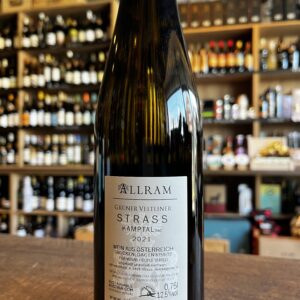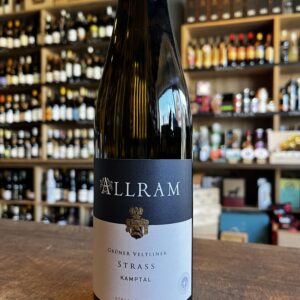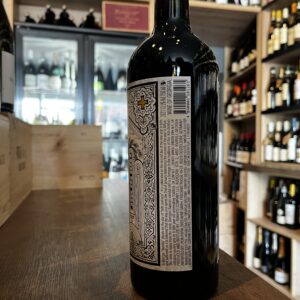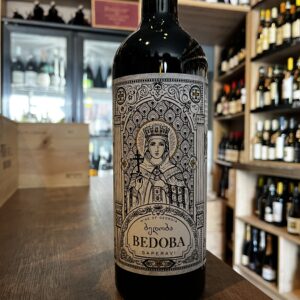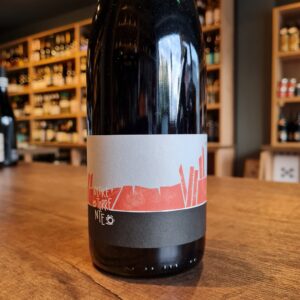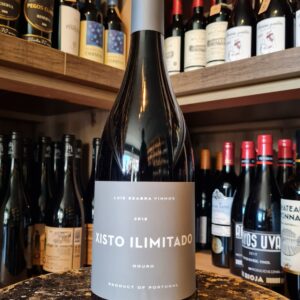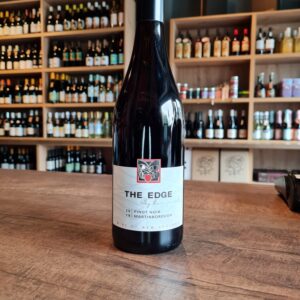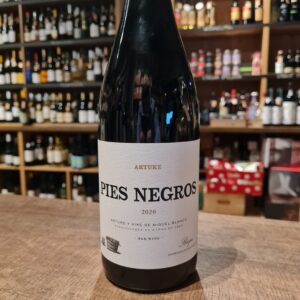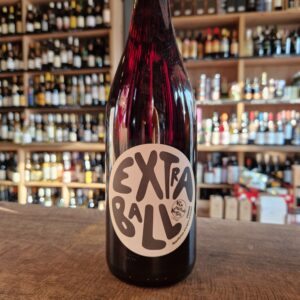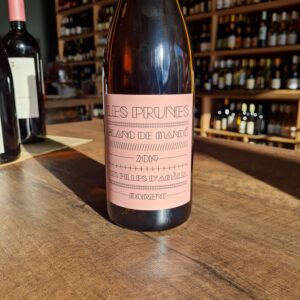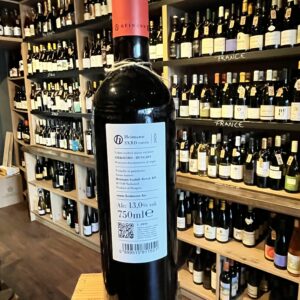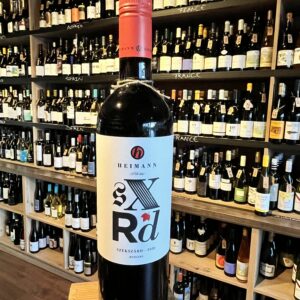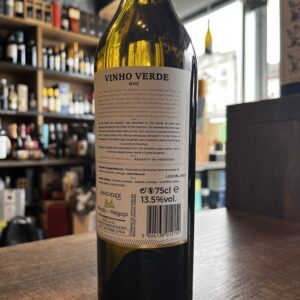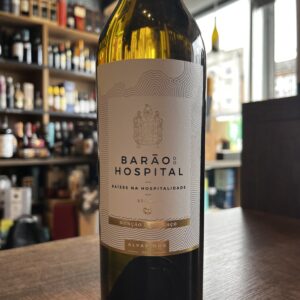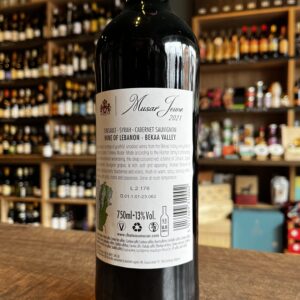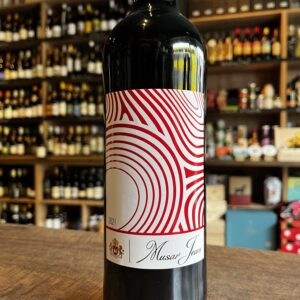-
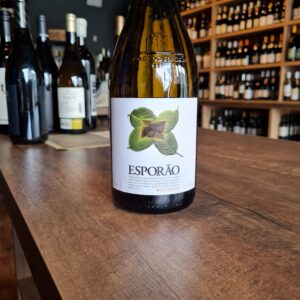 A classic wine(Organic) obtained from grapes grown at Herdade do Esporão, which showcases the consistency and rich character typical of the best Alentejo wines. It Is from vineyards that on average are about 18 years old, the soils are a mixture of granite and schist with clay and loam, and an integrated pest control and a sustainable viticultural approach is employed. Hand-harvested grapes are de-stemmed, then left with skin contact for six hours before chilling and fermentation, 50% in tank with fine lees ageing and 50% in barriques where it is aged for six months. French and American oak is used, a third new, and the wine does not undergo a malolactic fermentation. Aromas of ripe tangerine, honey and apricot with subtle notes of toast and smoke from the barrel fermentation. The palate is complex, creamy, showing ripe fruit flavours and mineral notes with a long, fresh finish.
A classic wine(Organic) obtained from grapes grown at Herdade do Esporão, which showcases the consistency and rich character typical of the best Alentejo wines. It Is from vineyards that on average are about 18 years old, the soils are a mixture of granite and schist with clay and loam, and an integrated pest control and a sustainable viticultural approach is employed. Hand-harvested grapes are de-stemmed, then left with skin contact for six hours before chilling and fermentation, 50% in tank with fine lees ageing and 50% in barriques where it is aged for six months. French and American oak is used, a third new, and the wine does not undergo a malolactic fermentation. Aromas of ripe tangerine, honey and apricot with subtle notes of toast and smoke from the barrel fermentation. The palate is complex, creamy, showing ripe fruit flavours and mineral notes with a long, fresh finish. -
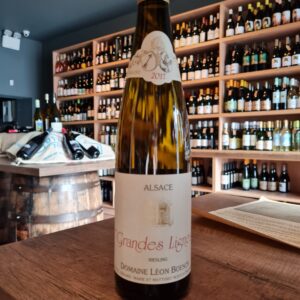 The Boesch domaine is located within the Vallèe Noble, in the “Ballons des Vosges” natural park. A magical place, surrounded by splendid vineyards at the foot of the two highest mountains of the Vosges range. The Boesch family has lived there and worked the land since 1640. 25 year old biodynamic vines planted in a limestone and sandstone-clay soil on an east facing hillside give this delicious wine. This wine is the subject of evident care: ploughing, natural treatments, and the vines are fertilized with compost produced on the estate. The harvest, the highlight of the year, is carried out exclusively by hand, and fermentation takes place with indigenous yeasts in oak casks. The nose is characterized by rhubarb, apricot, anise and gingerbread. On the palate it is very clean. Definitely a great Riesling.
The Boesch domaine is located within the Vallèe Noble, in the “Ballons des Vosges” natural park. A magical place, surrounded by splendid vineyards at the foot of the two highest mountains of the Vosges range. The Boesch family has lived there and worked the land since 1640. 25 year old biodynamic vines planted in a limestone and sandstone-clay soil on an east facing hillside give this delicious wine. This wine is the subject of evident care: ploughing, natural treatments, and the vines are fertilized with compost produced on the estate. The harvest, the highlight of the year, is carried out exclusively by hand, and fermentation takes place with indigenous yeasts in oak casks. The nose is characterized by rhubarb, apricot, anise and gingerbread. On the palate it is very clean. Definitely a great Riesling. -
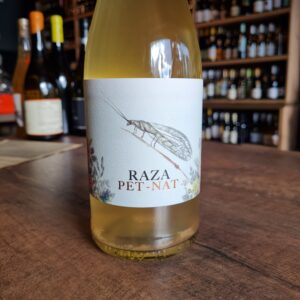 The concept of this label is to send the consumer to the botanical universe of the XVI century. A very unique style which is a tribute to nature and the living beings who look after it so well. A mixture of charcoal pencils with watercolor provides fresh, traditional, and natural air. The informative label on the side of the bottle is drawn in a vintage style referencing this era's aesthetics. The Lacewing or Chrysoperla (Raza)represents their holistic approach to viticulture. Its efficiency in biological control pest is remarkable and helps keep the vines free of pests.Pet Nat is an abbreviation for Pétillant Naturel, a naturally sparkling wine. The fermented wine is still bottled in the bottle, which stops the fermentation there, so a little CO2 and yeast precipitate is formed in the bottle. The wine is not cleaned, sweetened (no dosage) and the wine is now closed with a regular crown cap. The wine is made with natural yeast and uses minimal sulphites. Spontaneous fermentation ends in the bottle, as a result of which a pleasantly natural layer remains in the wine. This refreshing, sparkling wine is full of fruity and lively orchard flavors. The natural sediment makes the wine cloudy, while adding many interesting nuances to the taste, the wild yeast makes the wine tasty and easy to enjoy.
The concept of this label is to send the consumer to the botanical universe of the XVI century. A very unique style which is a tribute to nature and the living beings who look after it so well. A mixture of charcoal pencils with watercolor provides fresh, traditional, and natural air. The informative label on the side of the bottle is drawn in a vintage style referencing this era's aesthetics. The Lacewing or Chrysoperla (Raza)represents their holistic approach to viticulture. Its efficiency in biological control pest is remarkable and helps keep the vines free of pests.Pet Nat is an abbreviation for Pétillant Naturel, a naturally sparkling wine. The fermented wine is still bottled in the bottle, which stops the fermentation there, so a little CO2 and yeast precipitate is formed in the bottle. The wine is not cleaned, sweetened (no dosage) and the wine is now closed with a regular crown cap. The wine is made with natural yeast and uses minimal sulphites. Spontaneous fermentation ends in the bottle, as a result of which a pleasantly natural layer remains in the wine. This refreshing, sparkling wine is full of fruity and lively orchard flavors. The natural sediment makes the wine cloudy, while adding many interesting nuances to the taste, the wild yeast makes the wine tasty and easy to enjoy. -
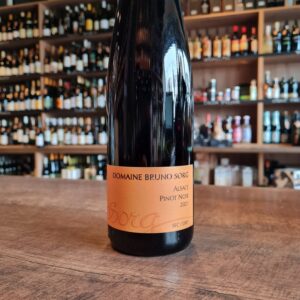 The late Bruno Sorg and his son François are responsible for some of the finest, richest and most concentrated wines in Alsace. The Sorg family have been producing wine in the Alsace since the 18th century, with this particular branch of it established in the late 1960s by Renée and the late Bruno Sorg. Alsace is becoming better known for and offering superb value in comparison to some Pinot from Burgundy. A complex Pinot, that has good fruit density, freshness along with a savoury dimension. Fantastic value!
The late Bruno Sorg and his son François are responsible for some of the finest, richest and most concentrated wines in Alsace. The Sorg family have been producing wine in the Alsace since the 18th century, with this particular branch of it established in the late 1960s by Renée and the late Bruno Sorg. Alsace is becoming better known for and offering superb value in comparison to some Pinot from Burgundy. A complex Pinot, that has good fruit density, freshness along with a savoury dimension. Fantastic value! -
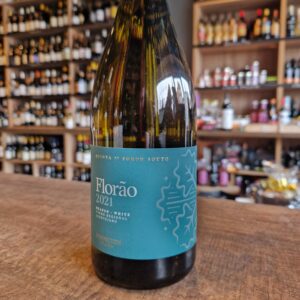 Quinta da Fonte Souto is in the Portalegre subregion of the Alto Alentejo in southern Portugal. Close to the São Mamede range (1,025 metres), the property benefits from the area’s altitude with its cooler microclimate in sharp contrast to the Alentejo region’s typically hot and dry conditions. Yields are low due to the schist and granite soils, which are less fertile than those found in the flat and rolling terrain which characterizes the majority of the Alentejo.
Quinta da Fonte Souto is in the Portalegre subregion of the Alto Alentejo in southern Portugal. Close to the São Mamede range (1,025 metres), the property benefits from the area’s altitude with its cooler microclimate in sharp contrast to the Alentejo region’s typically hot and dry conditions. Yields are low due to the schist and granite soils, which are less fertile than those found in the flat and rolling terrain which characterizes the majority of the Alentejo. -
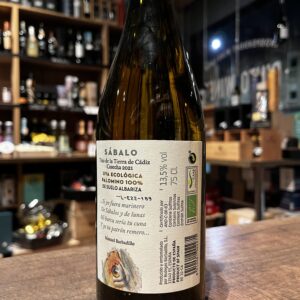
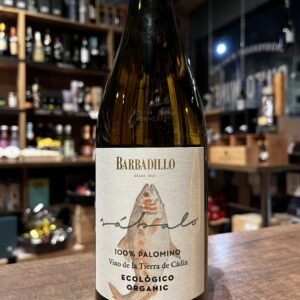 Sábalo is produced from 100% ecological Palomino Fino grapes and it is a spectacular wine, the true fruit of our many years of expertise. The grapes used to produce this wine are harvested in the white albariza soils of Sanlúcar, and as such the sea, the marshlands and the Guadalquivir River all form part of what is essentially Sábalo’s DNA.
Sábalo is produced from 100% ecological Palomino Fino grapes and it is a spectacular wine, the true fruit of our many years of expertise. The grapes used to produce this wine are harvested in the white albariza soils of Sanlúcar, and as such the sea, the marshlands and the Guadalquivir River all form part of what is essentially Sábalo’s DNA. -
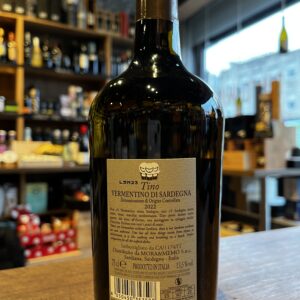
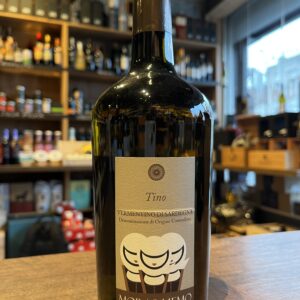 Their Vineyard is located in the south eastern corner of Sardinia in a rolling hill area looking at the sea of the Gulf of Cagliari. Vines with an average age of forty years our vineyards are able to express the best from the terroir of the south Sardinia. A unique terroir with the Sette Fratelli mountains, the tallest ones of the south of the island, just a mile away from the winery, behind them the beatiful beaches overlooking the Thyreenian sea. Pair with seafood in general, fish and delicate meat served with light sauces, soups or pasta.
Their Vineyard is located in the south eastern corner of Sardinia in a rolling hill area looking at the sea of the Gulf of Cagliari. Vines with an average age of forty years our vineyards are able to express the best from the terroir of the south Sardinia. A unique terroir with the Sette Fratelli mountains, the tallest ones of the south of the island, just a mile away from the winery, behind them the beatiful beaches overlooking the Thyreenian sea. Pair with seafood in general, fish and delicate meat served with light sauces, soups or pasta. -
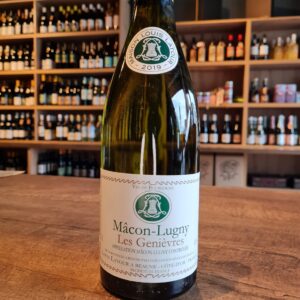 This Macon Lugny Les Genièvres has beautiful aromas of white fruit, muscat, as well as some peppery notes. This is a delicious wine with a round and full mouth(unoaked), it shows distinctive aromas of white fruit, laced with floral notes. Ideal with grilled fish, seafood and Comté cheese. The village of Lugny is located high up in the South of the Mâcon region. It has a great reputation for its white wines which has made Mâcon famous. It is well known that the village of Lugny, with its limestone soils and warm climate, produces the most coveted white wines of the region. The vineyard of « Les Genièvres » is one of the best. Maison Louis Latour selects the best grapes of this village, which thanks to its terroir, was the only village planted with Chardonnay 30 years ago.
This Macon Lugny Les Genièvres has beautiful aromas of white fruit, muscat, as well as some peppery notes. This is a delicious wine with a round and full mouth(unoaked), it shows distinctive aromas of white fruit, laced with floral notes. Ideal with grilled fish, seafood and Comté cheese. The village of Lugny is located high up in the South of the Mâcon region. It has a great reputation for its white wines which has made Mâcon famous. It is well known that the village of Lugny, with its limestone soils and warm climate, produces the most coveted white wines of the region. The vineyard of « Les Genièvres » is one of the best. Maison Louis Latour selects the best grapes of this village, which thanks to its terroir, was the only village planted with Chardonnay 30 years ago. -
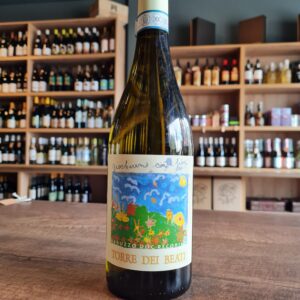 Pecorino We will play with the Flowers of Torre dei Beati born in the vineyards located on the hills at the foot of the Gran Sasso, in the heart of the Abruzzo region.It is produced exclusively with Pecorino grapes, recently recovered in Italy as an ancient grape. The Pecorino is a native vine of poor productivity and great enological interest, which is deserving the attention of the fans. Torre dei Beati uses traditional and non-intrusive winemaking techniques. After fermentation in stainless steel tanks at controlled temperature, the wine ages in steel before being bottled. It is characterized by a straw yellow color with golden reflections. The nose is fine and elegant, with hints of pear and white flowers, rounded by pleasant honeyed notes and hints of medicinal herbs. On the palate it is soft and with an excellent balance between alcohol, acidity and minerality. The wine has a long lasting and stimulating finish. Perfect to accompany aperitifs, appetizers and fish dishes, it is ideal in combination with white meats and first courses.
Pecorino We will play with the Flowers of Torre dei Beati born in the vineyards located on the hills at the foot of the Gran Sasso, in the heart of the Abruzzo region.It is produced exclusively with Pecorino grapes, recently recovered in Italy as an ancient grape. The Pecorino is a native vine of poor productivity and great enological interest, which is deserving the attention of the fans. Torre dei Beati uses traditional and non-intrusive winemaking techniques. After fermentation in stainless steel tanks at controlled temperature, the wine ages in steel before being bottled. It is characterized by a straw yellow color with golden reflections. The nose is fine and elegant, with hints of pear and white flowers, rounded by pleasant honeyed notes and hints of medicinal herbs. On the palate it is soft and with an excellent balance between alcohol, acidity and minerality. The wine has a long lasting and stimulating finish. Perfect to accompany aperitifs, appetizers and fish dishes, it is ideal in combination with white meats and first courses. -
Out of stock
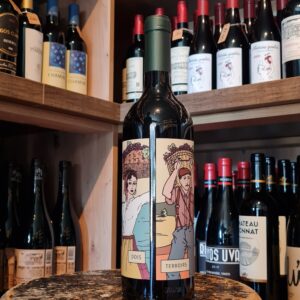 This blend of Aragonez, Syrah and Pinot Noir results from the fusion of two distinct terroirs, where the Mediterrean climate of the Alentejan interior meets the cool maritime climate of the Alentejan Atlantic coast. Pinot Noir, grown in sandy soils in our cool, Alentejan Atlantic coastal vineyards, provides freshness and elegance to balance the fruit generosity of the Aragonez and Syrah grown further inland, on the ancient clay over limestone soils surrounding the Estate. Viticulture here is certified sustainable. Attractive lifted red berry fruit aromas, with a touch of vanilla. Vibrant fruit on the palate, juicy and intense, finishing with a nice acidity.
This blend of Aragonez, Syrah and Pinot Noir results from the fusion of two distinct terroirs, where the Mediterrean climate of the Alentejan interior meets the cool maritime climate of the Alentejan Atlantic coast. Pinot Noir, grown in sandy soils in our cool, Alentejan Atlantic coastal vineyards, provides freshness and elegance to balance the fruit generosity of the Aragonez and Syrah grown further inland, on the ancient clay over limestone soils surrounding the Estate. Viticulture here is certified sustainable. Attractive lifted red berry fruit aromas, with a touch of vanilla. Vibrant fruit on the palate, juicy and intense, finishing with a nice acidity. -
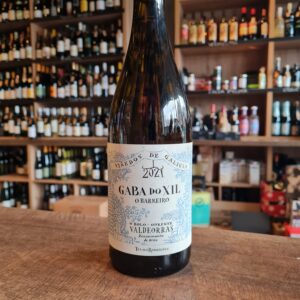 This slinky, mineral white hails from Valdeorras (“Valley of Gold”) in eastern Galicia, a region once famous for goldmining and now best known for its unique and complex wines made from the indigenous Godello grape. The wine is named for the river Sil that flows through the region (Xil is its ancient name, used by the Celtic people who once inhabited the area). Many of the river’s tributaries are flanked on either side by vineyards, planted in terraces on steep slate hillsides. The label displays a dozen bridges, symbolizing the idea of crossing from one vineyard plot to another. Gaba do Xil Godello is produced partially from grapes that are partially estate-grown and partially sourced from long-term suppliers. They come from 4 plots (O Val Grande, O Rasedo, A Torgueira, and O Valverde) located near the Bibei tributary, close to the town of Santa Cruz. Dotted with chestnut trees mixed with rockrose, the old granitic terraces barely have enough space to squeeze in the odd row of vines, following the folds of the mountains that plunge into the river. The vines grow in shallow, stony granite soils on terraces facing south, west and northwest. These coarse soils are low fertility and have low water retention capacity, forcing the vines to struggle and limiting yields. This Godello, is unoaked, gentle, restrained and precise which is dry and soft with a touch of godello's distinctive minerally citrus fruit, absoloutly perfect with light sea food dishes. Excellent value
This slinky, mineral white hails from Valdeorras (“Valley of Gold”) in eastern Galicia, a region once famous for goldmining and now best known for its unique and complex wines made from the indigenous Godello grape. The wine is named for the river Sil that flows through the region (Xil is its ancient name, used by the Celtic people who once inhabited the area). Many of the river’s tributaries are flanked on either side by vineyards, planted in terraces on steep slate hillsides. The label displays a dozen bridges, symbolizing the idea of crossing from one vineyard plot to another. Gaba do Xil Godello is produced partially from grapes that are partially estate-grown and partially sourced from long-term suppliers. They come from 4 plots (O Val Grande, O Rasedo, A Torgueira, and O Valverde) located near the Bibei tributary, close to the town of Santa Cruz. Dotted with chestnut trees mixed with rockrose, the old granitic terraces barely have enough space to squeeze in the odd row of vines, following the folds of the mountains that plunge into the river. The vines grow in shallow, stony granite soils on terraces facing south, west and northwest. These coarse soils are low fertility and have low water retention capacity, forcing the vines to struggle and limiting yields. This Godello, is unoaked, gentle, restrained and precise which is dry and soft with a touch of godello's distinctive minerally citrus fruit, absoloutly perfect with light sea food dishes. Excellent value -
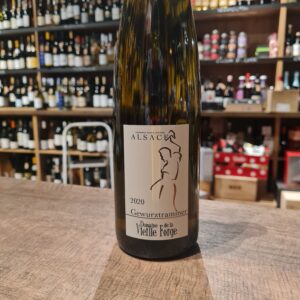 With his diploma in oenology, Denis Wurtz has been reviving since 1998 the estate of his grandparents in Beblenheim, whose name evokes the profession of one of his ancestors. Installed in a 16th century half-timbered house in the heart of the gorgeous Alsatian vineyards. The Vieille Forge Estate runs 10 acres where 1/3 is dedicated to the production of Grands Cru wines. To the south of Riquewihr, the vineyard is situated in a natural circus oriented gently towards the south-east. Its clay-marly soils are favorable to gewurztraminer. This enchants with the intensity and finesse of its aromatic palette. A sensational wine, it will assert itself with spicy dishes from other continents, cheeses and even desserts.
With his diploma in oenology, Denis Wurtz has been reviving since 1998 the estate of his grandparents in Beblenheim, whose name evokes the profession of one of his ancestors. Installed in a 16th century half-timbered house in the heart of the gorgeous Alsatian vineyards. The Vieille Forge Estate runs 10 acres where 1/3 is dedicated to the production of Grands Cru wines. To the south of Riquewihr, the vineyard is situated in a natural circus oriented gently towards the south-east. Its clay-marly soils are favorable to gewurztraminer. This enchants with the intensity and finesse of its aromatic palette. A sensational wine, it will assert itself with spicy dishes from other continents, cheeses and even desserts. -
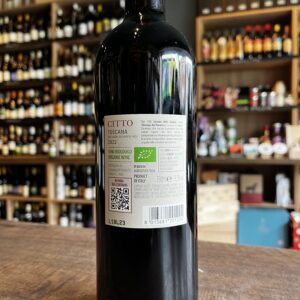
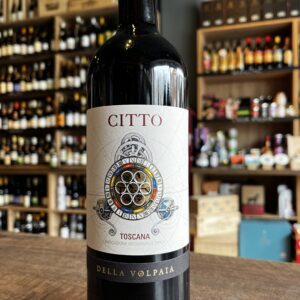 Castello di Volpaia overlooks the village of Radda in Chianti. The town was built in the 11th century as a fortified village on the border of Florence and Sienna. Although only part of the original protective walls and two of its six towers are still standing, the medieval layout and buildings within the village are still intact, making Volpaia one of the best preserved villages of its period. Just as it has been for the last 900 years, the entire village is intimately involved in the production of wine and olive oil. The cellars, bottling plant, barrels and olive press are nestled within the original stone walls that have been carefully restored by owners Carlo Mascheroni and Giovanella Stianti Mascheroni and their children, Nicolo and Federica. The nearly 114 acres of vineyards owned by Castello di Volpaia are at 1,300-2,130 feet above sea level, making Volpaia the highest winery in the Chianti region. The land is comprised of soils consisting largely of sandstone and a sedimentary rock from the Pliocene era. Citto is made from a selection of the best grapes from our IGT vineyards in the Chianti Classico and Maremma areas In the Tuscan dialect Citto means young boy. As from the land in comes from Citto is the young boy of Volpaia.As in the French tradition of the great Bordeaux Chateaux Chateau Mouton Rotschild has Mouton Cadet and Chateau Cheval Blanc has Petit Cheval, the same way Castello di Volpaia has his Citto. Pair with red meats and charcuterie
Castello di Volpaia overlooks the village of Radda in Chianti. The town was built in the 11th century as a fortified village on the border of Florence and Sienna. Although only part of the original protective walls and two of its six towers are still standing, the medieval layout and buildings within the village are still intact, making Volpaia one of the best preserved villages of its period. Just as it has been for the last 900 years, the entire village is intimately involved in the production of wine and olive oil. The cellars, bottling plant, barrels and olive press are nestled within the original stone walls that have been carefully restored by owners Carlo Mascheroni and Giovanella Stianti Mascheroni and their children, Nicolo and Federica. The nearly 114 acres of vineyards owned by Castello di Volpaia are at 1,300-2,130 feet above sea level, making Volpaia the highest winery in the Chianti region. The land is comprised of soils consisting largely of sandstone and a sedimentary rock from the Pliocene era. Citto is made from a selection of the best grapes from our IGT vineyards in the Chianti Classico and Maremma areas In the Tuscan dialect Citto means young boy. As from the land in comes from Citto is the young boy of Volpaia.As in the French tradition of the great Bordeaux Chateaux Chateau Mouton Rotschild has Mouton Cadet and Chateau Cheval Blanc has Petit Cheval, the same way Castello di Volpaia has his Citto. Pair with red meats and charcuterie


